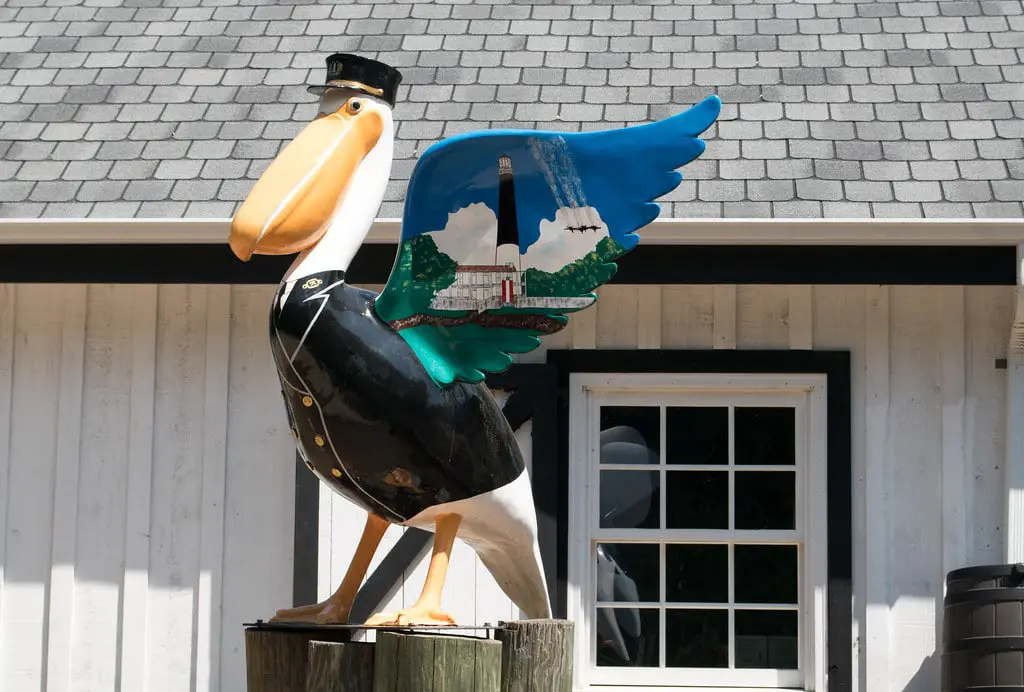From the Dawn of the Lightship to the Rise of the Tower
Perched upon the bountiful waters of Pensacola Bay, Florida, the historic Pensacola Lighthouse has been a trusted guide for mariners since the early 19th century.
The first iteration was a lightship named Aurora Borealis, which was transferred to Pensacola, FL, in 1823 from its previous station at the Mississippi River’s mouth.
In 1825, a 40-foot tower was erected on a bluff at the bay’s south entrance, replacing the lightship. Yet, its visibility was hampered by trees and a challenging location. The solution?
A new tower on the north side of the bay was constructed in 1858 and lit for the first time on New Year’s Day 1859.
Towering 150 feet high atop a 40-foot bluff, it stands proud on the Pensacola Naval Air Station, its light beaconing 190 feet above sea level.
A Tale of Two Lights
The Pensacola Lighthouse has not always been a solitary beacon.
The relocation of the lighthouse enabled it to function as the rear range light, effectively guiding vessels through the Pensacola Bar.
In 1879, a new front range beacon, the Pensacola Bar Beacon, was erected 448 feet southeast of the light tower.
It was a square, pyramidal wooden tower, 26 feet tall, with its light 55 feet above the water.
However, this companion to the main building had a short life and was demolished in the early 1900s.
Marked by the Civil War
The Pensacola Lighthouse did not escape the tumultuous times of the Civil War.
Confederate forces controlled Pensacola at the start of the war, while Union-held Fort Pickens sat across the bay.
The Confederate authorities removed the lens from the lighthouse, and much of its supplies were requisitioned for the war effort.
An artillery duel in November 1861 even damaged the lighthouse tower.
Confederate forces later evacuated Pensacola, replaced by Union forces.
The Pensacola Light was relit in 1863 using a fourth-order Fresnel lens. In 1869, a new first-order lens was placed in the tower.
A significant change came in 1939 with the introduction of electricity, eliminating the need to rewind the light rotation clockworks every 4½ hours.
The lighthouse was automated in 1965, making the lighthouse today’s efficient guide.
A Recognized Landmark
The Pensacola Lighthouse’s historical significance has not gone unnoticed.
The tower and its associated buildings were added to the National Register of Historic Places in 1974, marking its value as a piece of American heritage.

Furthermore, in 1989, both the lighthouse and the keeper’s quarters earned a spot in A Guide to Florida‘s Historic Architecture, a noteworthy book published by the University of Florida Press.
A Living Part of the Community
While it might seem like a relic of the past, the Pensacola Lighthouse is alive today, serving as an active aid to navigation.
It reopened for public tours on a limited basis in 2009 and has been open seven days a week since early 2011.
The Pensacola Lighthouse Association, a non-profit organization, conducts maintenance and tour operations.
The Association also administers a museum and gift shop housed in the 1869 keeper’s quarters, adjacent to the lighthouse tower.

A New Chapter of Discovery
In October 2021, an archaeological discovery near the Pensacola Lighthouse added a new chapter to its storied past.
Archaeologists uncovered the historical remnants of Charles Hart’s homestead.
Hart was a formerly enslaved person who fled bondage to work in Pensacola’s Navy yard and at the lighthouse.
He also founded the Good Hope AME church. Following his homestead’s discovery, the Hart Homestead and Archaeological Park was constructed in 2022.
This new interpretive site will highlight the challenges faced by African American families who sought claims to land and independent livelihoods during the Reconstruction period.
Visiting the Lighthouse Today
While the Pensacola Lighthouse is open for public tours, it’s essential to know that it is located on an active military base, the Naval Air Station Pensacola.

As such, access to the lighthouse and other attractions on base, like the National Naval Aviation Museum and Fort Barrancas, can be limited and subject to special conditions.
For example, public access was granted in March 2023, with restrictions on weapons, backpacks, alcoholic beverages, and requirements for valid ID for all guests 18 and older.
Supporting the Lighthouse
As a non-profit organization, the Pensacola Lighthouse & Maritime Museum thrives thanks to the support of visitors and the community.
Donations help the organization fulfill its mission of “Preserving the Past to Enlighten Our Future.”
There are several ways you can donate, such as sponsoring a Commemorative Brick in the Keeper’s Walk for $100, sponsoring a stair in the lighthouse for $1,000, or becoming a Lighthouse Keeper for $3,000, which includes an engraved brick, a brass plaque on a stair, and a lifetime pass for you and your immediate family.

The Pensacola Light is a beacon for mariners and those seeking a connection with the past. Its rich history and active role in the community remind us of our collective journey through time, illuminating the way forward with the light of knowledge and understanding.
